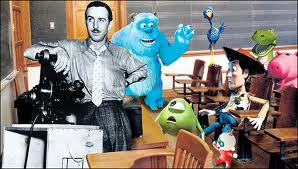One of the challenges of intrapreneurship is identifying key innovators within an organization. Despite efforts to instill a culture that champions everyone as an innovative thinker, we often find in consulting that executives want someone to whom they can look for innovation pace setting. The question often becomes how to determine who has the strongest innovation DNA. When I was enrolled in an MBA program at Elon, my instructor invited us to take a Creax assessment to analyze out ability to be creative in problem solving and idea commercialization. Last week, I ran across a blog post from my friend Jeffrey Phillips that discussed this very issue and how his firm, Ovo Innovation, approaches the challenge.
 Jeffrey points out that many good innovators aren’t “mainstream” corporate types. In fact, he argues that “they may occupy positions that aren’t exciting, or may be people who are interested in change and uncertainty, while the rest of the organization is fixated on efficiency. In other words, some of your best innovators may be shunted to secondary positions because their insights and feedback seem like complaining about the status quo.” He then makes a series of observations about common misconceptions:
Jeffrey points out that many good innovators aren’t “mainstream” corporate types. In fact, he argues that “they may occupy positions that aren’t exciting, or may be people who are interested in change and uncertainty, while the rest of the organization is fixated on efficiency. In other words, some of your best innovators may be shunted to secondary positions because their insights and feedback seem like complaining about the status quo.” He then makes a series of observations about common misconceptions:
Good innovators aren’t necessarily:
- The “Experts” – too often organizations assign innovation activities to the people who know the issue or problem exceptionally well. But these individuals often rule out ideas and narrow the scope too quickly based on past experience. The “curse of knowledge” blinds many experts to opportunities, or the fact that knowledge of the past or expertise today doesn’t guarantee success tomorrow.
- Prominent leaders. Many good leaders achieved their roles through excellent financial prowess and are good at asking tough questions about profitability and cost. Frequently these individuals struggle in innovation activities because the ROI is so uncertain, and they reduce the scope and possibilities to conform to their own financial models or expectations.
- “Idea People”. In any organization there are people who have ideas or who are very creative, but they may not be your best innovators. Like Michael Keaton’s character in Night Shift they may record ideas (“feed the tuna fish mayonnaise”) but those ideas may not be valuable or practical or solve customer needs.
These observations are significant, because they demonstrate that there are number of desirable competencies that innovators have in common:
- Deeply curious about how and why things work and how they can be better
- Experimentive, willing to try things, make small tests
- Comfortable with risk and ambiguity
- Eager for change
- Very empathetic to customer needs and market conditions
- Not locked into the “way we do things”
- Can look at problems from a new perspective or a “naive” viewpoint
In order to identify those key innovators, he recommends some different assessments:
The first we use is The Innovator’s DNA, an excellent book that calls out five characteristics of successful innovation leaders: associating, questioning, experimenting, observing and networking.
Next we use assessments like Foursight, which suggests that individuals have specific skills that are applicable at different phases in an innovation activity, from clarifying to ideating to developing and implementing. This helps place the right people in the right task at the right time.
Next we assess the individual and their tolerance for risk, change and ambiguity. Good innovators are comfortable with extending scope, doing new things, cannibalizing existing products, entering new markets. They are comfortable with ambiguity – not everything has to be perfectly understood or “black and white”. They are often entrepreneurial, interested in new products or opportunities as opposed to supporting and sustaining the existing processes or products.
Hopefully, you can use these tools to help identify innovation talent in your organization!




